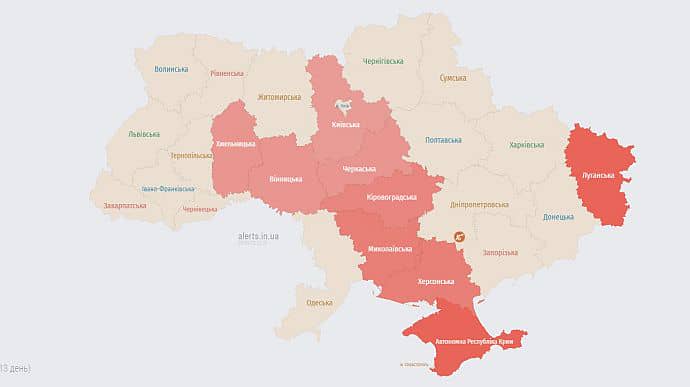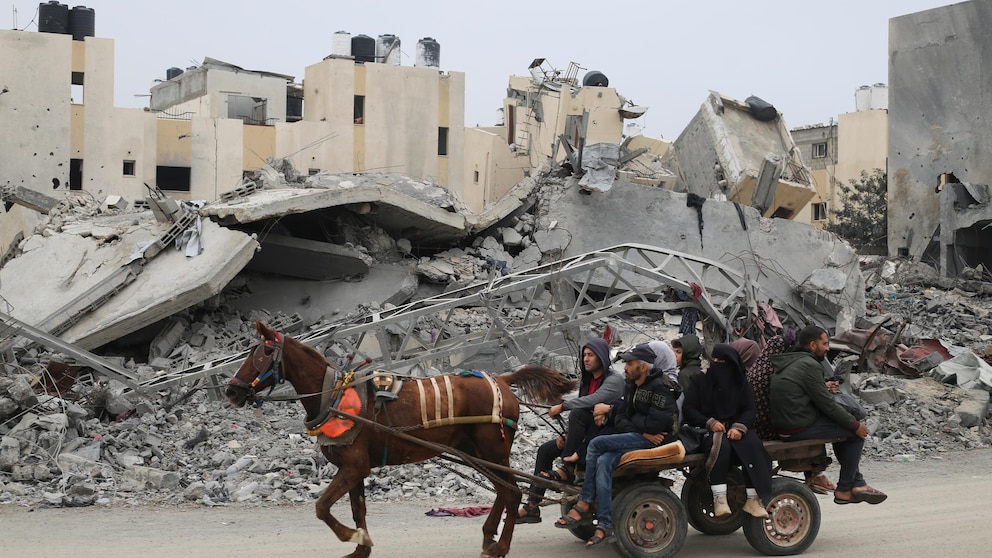Russian Assault UAVs Attack Ukraine, Causing Damage and Casualties.
October 30, 2023 | by b1og.net


In recent developments, Russian assault unmanned aerial vehicles (UAVs) have launched a series of attacks on Ukraine, resulting in significant damage and casualties. This troubling development has escalated the already tense situation between the two nations, with the potential for further escalation and evolving dynamics. As the situation unfolds, it becomes increasingly critical to closely monitor these events and their potential ramifications, both regionally and globally.
▶ [Kucoin] Transaction fee 0% discount CODE◀
Background
Russian assault UAVs attack Ukraine
In recent times, Ukraine has faced a significant threat with the deployment of Russian assault unmanned aerial vehicles (UAVs) in their ongoing conflict. These UAVs, also known as drones, have been utilized by Russia to carry out offensive operations, causing extensive damage and resulting in numerous casualties. The severity of these attacks has raised concerns within the international community regarding the escalation of the conflict and its potential for further developments.
Current Situation
Ongoing conflict
Ukraine finds itself in the midst of an ongoing conflict, exacerbated by the deployment of Russian assault UAVs. The use of these advanced unmanned aircraft has added a new dimension to the conflict, making it even more challenging to resolve. The ongoing clashes have resulted in a significant loss of life and destruction of infrastructure, further deepening the divide between the two nations.
Potential for further developments
The use of Russian assault UAVs in the conflict raises concerns about the potential for further developments. These unmanned aerial systems provide Russia with a strategic advantage, allowing them to target key infrastructure and military assets within Ukraine. The continued deployment of UAVs suggests that the conflict may escalate further, leading to increased damage and casualties if appropriate measures are not taken.
Types of Russian Assault UAVs
Overview of different UAV models used by Russia
Russia employs various models of assault UAVs in their attacks on Ukraine. One such model is the Orlan-10, a small and versatile UAV capable of carrying out reconnaissance and surveillance missions. Another notable UAV utilized by Russia is the Berkut, which possesses a longer flight range and is equipped with advanced surveillance and targeting capabilities. These UAVs, among others, have significantly contributed to the success of Russian operations in Ukraine.
Russian UAV Capabilities
Military capabilities and features of Russian assault UAVs
Russian assault UAVs boast impressive military capabilities and innovative features. These drones are equipped with sophisticated targeting systems, allowing them to accurately strike targets with precision-guided munitions. Moreover, they possess advanced surveillance capabilities, including high-resolution cameras and thermal imaging technology, enabling enhanced situational awareness for the operators. The ability of these UAVs to operate in contested airspace and effectively engage targets has proved highly detrimental to Ukraine’s defense forces and infrastructure.
Targets and Damage
Impact on infrastructure
The deployment of Russian assault UAVs has wreaked havoc on Ukraine’s infrastructure. Critical civilian infrastructure, such as power plants, communication networks, and transportation hubs, have been targeted, leading to widespread disruption and debilitating consequences for the local population. Additionally, key military installations and equipment have suffered significant damage, impairing Ukraine’s ability to effectively defend itself against further aggression.
Human casualties and injuries
The attacks carried out by Russian assault UAVs have resulted in a tragic loss of human life and inflicted severe injuries upon the Ukrainian population. Civilians, as well as military personnel, have been directly targeted, causing immense suffering for the affected individuals and their families. The indiscriminate nature of these attacks, intended to weaken morale and spread fear, has resulted in the creation of a humanitarian crisis within Ukraine.
Response from Ukraine
Ukrainian defense measures
In response to the relentless attacks perpetrated by Russian assault UAVs, Ukraine has implemented various defense measures to mitigate the impact. These measures include the deployment of anti-aircraft systems to intercept and neutralize incoming drones, as well as the development of electronic warfare capabilities to disrupt UAV communications and resist their surveillance efforts. Additionally, Ukraine has sought international assistance and cooperation to strengthen its defense capabilities against this aerial threat.
Counterattack strategies
Recognizing the need to counter the threat posed by Russian assault UAVs, Ukraine has devised comprehensive counterattack strategies. These strategies include targeted strikes against UAV launch sites and supply chains, aiming to disrupt Russian operations and reduce the availability of these aerial systems. The implementation of counterattack strategies reflects Ukraine’s determination to defend itself and deter further aggression.
International Reactions
Statements from global leaders and organizations
The deployment of Russian assault UAVs and the resulting conflict in Ukraine have elicited significant statements from global leaders and organizations. Many countries have condemned the aggressive actions taken by Russia and expressed their support for Ukraine’s sovereignty and territorial integrity. These statements highlight the international community’s concern over the use of unmanned aerial systems for offensive purposes and the need for a peaceful resolution to the conflict.
Potential involvement of international forces
As the situation in Ukraine continues to escalate, there is speculation regarding the potential involvement of international forces to address the crisis. Given the geopolitical implications of the conflict and the destabilizing effect it has on the region, international intervention may be required to restore peace and ensure the safety of the Ukrainian population. The possibility of international forces contributing to the resolution of the conflict raises hopes for a comprehensive solution that prioritizes stability and security.
Impact on Ukraine’s Security
Long-term consequences for national security
The deployment of Russian assault UAVs and the resulting conflict have severe long-term consequences for Ukraine’s national security. The continuous attacks on critical infrastructure diminish Ukraine’s ability to provide essential services to its citizens, causing dissatisfaction and further exacerbating the social and economic challenges faced by the nation. Moreover, the erosion of territorial control poses a significant threat to Ukraine’s sovereignty, potentially leading to further territorial disintegration if not addressed swiftly.
Strategic implications
The strategic implications of the conflict, fueled by Russian assault UAVs, extend beyond Ukraine’s borders. The use of advanced unmanned aircraft establishes a dangerous precedent that may encourage other nations to employ similar tactics in future conflicts. Furthermore, the conflict disrupts regional stability and fosters tensions among neighboring countries, potentially undermining diplomatic relations. These strategic implications necessitate a comprehensive approach to conflict resolution, focusing on regional cooperation and long-term stability.
▶ [Kucoin] Transaction fee 0% discount CODE◀
Outlook for Conflict Resolution
Possible paths to de-escalation
Resolving the conflict and de-escalating tensions in Ukraine requires a multifaceted approach. Diplomatic negotiations aimed at finding a peaceful solution need to be pursued rigorously, with an emphasis on dialogue and compromise. The international community, including key stakeholders and organizations, must facilitate these negotiations and encourage all parties to engage in meaningful dialogue. Additionally, the enforcement of ceasefires and the implementation of confidence-building measures are critical steps towards de-escalation.
Ceasefire negotiations
Ceasefire negotiations play a pivotal role in de-escalating the conflict and establishing a foundation for lasting peace. The cessation of hostilities provides an opportunity for both sides to engage in meaningful dialogue, assess grievances, and work towards a mutually acceptable resolution. It is essential that ceasefire agreements are respected and upheld by all parties involved, ensuring the safety and well-being of civilians in the conflict zone.
International mediation efforts
International mediation efforts are crucial in navigating the complex dynamics of the conflict and facilitating a peaceful resolution. The involvement of impartial mediators can help bridge the divide between Ukraine and Russia, foster trust, and encourage productive negotiations. Facilitating dialogue, proposing compromise solutions, and establishing accountability mechanisms are key roles that international mediators can play in bringing an end to the conflict.
Civilian Perspectives
Effect on local populations
The effect of the conflict, intensified by the deployment of Russian assault UAVs, has had a significant impact on local populations. Civilians have borne the brunt of the attacks, with many losing their homes, livelihoods, and loved ones. The constant threat of violence and displacement has created a pervasive sense of insecurity and fear, affecting the mental and physical well-being of individuals and communities. The conflict’s toll on civilians highlights the urgent need for humanitarian aid and support to alleviate their suffering.
Humanitarian crisis
The conflict in Ukraine, exacerbated by the use of Russian assault UAVs, has resulted in a severe humanitarian crisis. The destruction of critical infrastructure, disruption of essential services, and displacement of civilians have strained humanitarian resources and overwhelmed local authorities. Access to food, water, healthcare, and shelter has become increasingly limited, exacerbating the suffering of vulnerable populations. Addressing the humanitarian crisis requires international assistance and coordinated efforts to provide immediate aid and long-term support to those affected.
In conclusion, the deployment of Russian assault UAVs in the ongoing conflict in Ukraine has caused significant damage and casualties. The ongoing clashes and the potential for further developments emphasize the urgency for a resolution to the conflict. The types of UAVs utilized by Russia and their capabilities have posed a substantial challenge for Ukrainian defense forces. The attacks carried out by these UAVs have impacted critical infrastructure, resulting in civilian casualties and injuries. Ukraine has responded with defense measures and counterattack strategies, while international leaders and organizations have expressed their concern and potential involvement. The conflict’s long-term consequences on Ukraine’s security and the strategic implications are far-reaching. However, there is hope for conflict resolution through possible paths of de-escalation, including ceasefire negotiations and international mediation efforts. The conflict’s effect on local populations and the ensuing humanitarian crisis underline the crucial need for humanitarian aid and support. Ultimately, resolving the conflict and addressing the consequences of UAV attacks requires a concerted global effort to restore peace and stability in Ukraine.
RELATED POSTS
View all




